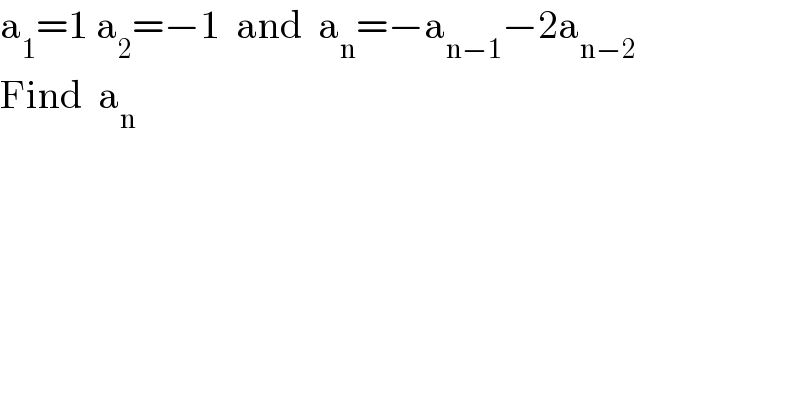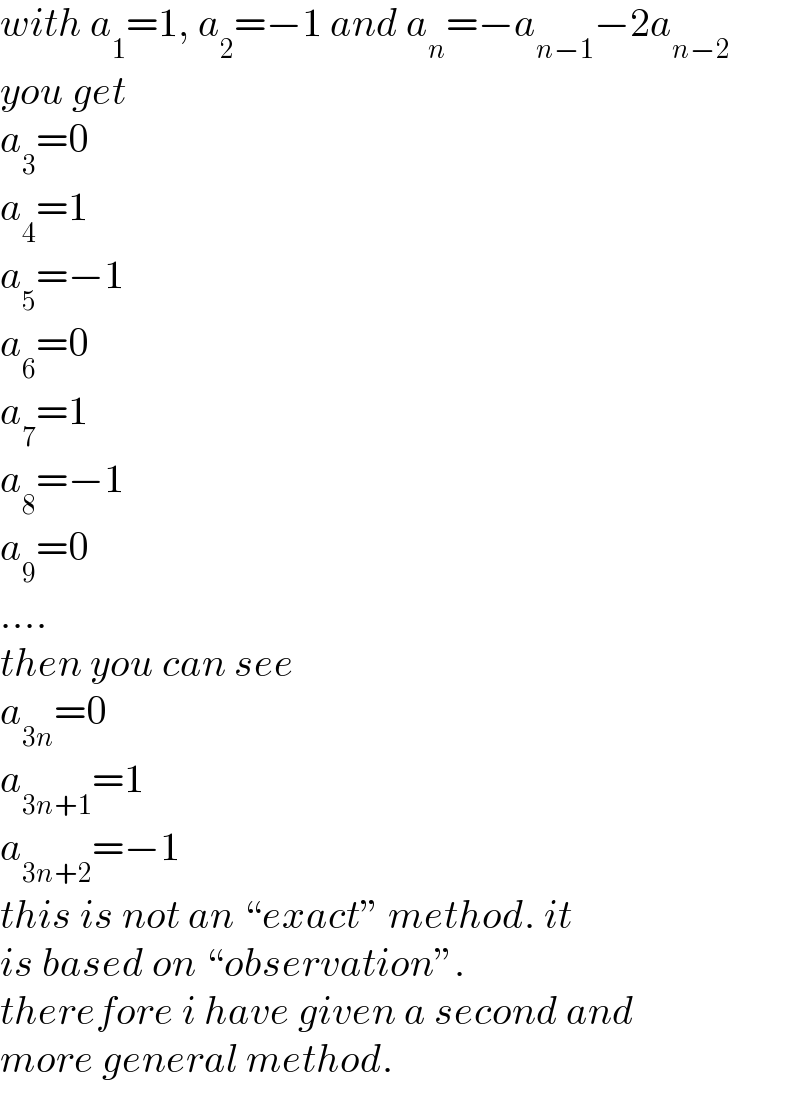
Question and Answers Forum
Question Number 164956 by Jamshidbek last updated on 24/Jan/22

Answered by mr W last updated on 24/Jan/22
![1,−1,0,1,−1,0,1,−1,0,... through “observation”: ⇒a_(3n) =0 ⇒a_(3n+1) =1 ⇒a_(3n+2) =−1 general method: r^2 +r+2=0 r=((−1±i(√3))/2)=−e^(±((πi)/3)) a_n =(−1)^n {Ae^((nπi)/3) +Be^(−((nπi)/3)) } a_2 =−a_1 −2a_0 ⇒−1=−1−2a_0 ⇒a_0 =0 a_0 =A+B=0 a_1 =−{A((1+i(√3))/2)+B((1−i(√3))/2)}=1 A{((1+i(√3))/2)−((1−i(√3))/2)}=−1 A=(i/( (√3)))=(1/( (√3)))e^((πi)/2) =−B a_n =(((−1)^n )/( (√3))){e^(((nπi)/3)+((πi)/2)) −e^(−((nπi)/3)+((πi)/2)) } a_n =(((−1)^n )/( (√3))){cos (((nπ)/3)+(π/2))−cos (−((nπ)/3)+(π/2))+i [sin (((nπ)/3)+(π/2))−sin (−((nπ)/3)+(π/2))]} a_n =(((−1)^n )/( (√3))){−2sin (((nπ)/3))+i [cos (((nπ)/3))−cos (((nπ)/3))} a_n =(((−1)^(n+1) 2 sin (((nπ)/3)))/( (√3)))](Q164963.png)
Commented by solihin last updated on 24/Jan/22

Commented by solihin last updated on 24/Jan/22

Commented by mr W last updated on 24/Jan/22

Commented by Tawa11 last updated on 24/Jan/22

Commented by Jamshidbek last updated on 25/Jan/22

Commented by mr W last updated on 25/Jan/22

Commented by aleks041103 last updated on 25/Jan/22

